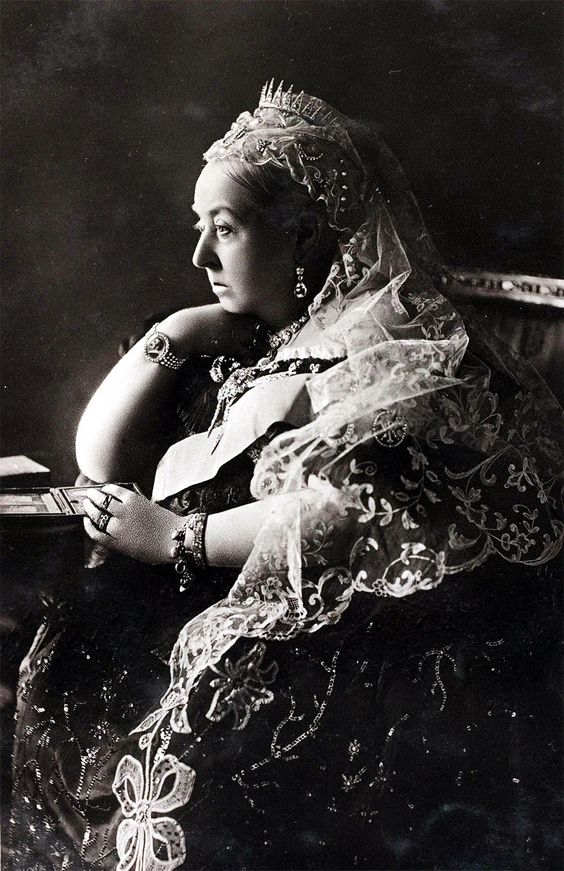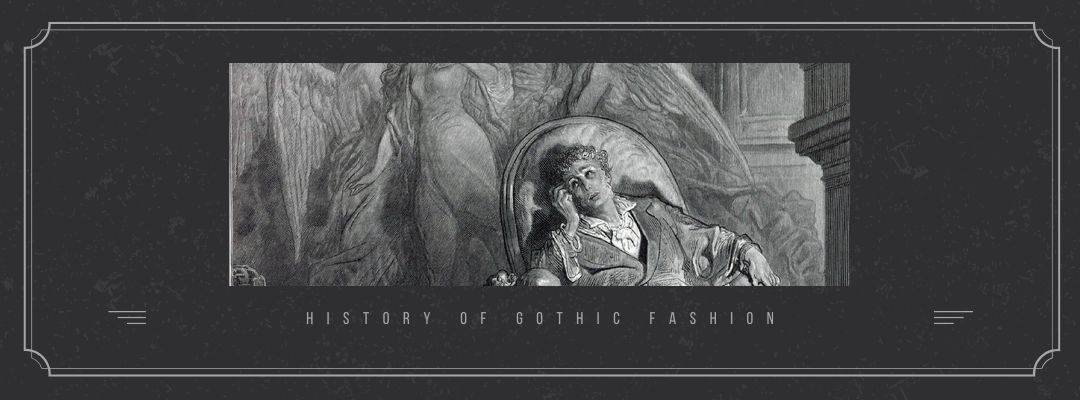Gothic fashion has a rich history that dates back to the Middle Ages and—in its darker form—from the start of the Romantic Period at the end of the 18th century when writers and creatives were taken with revolutionary fervor and found themselves yearning for things of beauty amidst the noise and smoke of the Industrial Revolution.
Growing in that incubator of discontent and finding its full expression around two centuries later, gothic fashion has kept some of its ornate roots while incorporating modern expressions of resistance and a fascination with the supernatural. Understanding the roots and later developments of the goth scene can provide inspiration for creating your own signature style.
The Dark Past

In the early Romantic Period, dark, brooding themes inspired a fashion style that showcased elaborate and ornate designs, lace, ruffles, and deep colors like black, scarlet, and purple. The style conveyed a sense of mystery and sophistication. Eventually, it started to evolve into a fashion of darkness and death.
Ever seen a cracked old photo of Edgar Allen Poe? A black frock coat and silken cravat (AKA scarf) tied around the neck was a stepping stone for the rich theatrical fashion of steampunk and Victorian goths. His darkly romantic and obscurely bizarre writings are the perfect metaphor for the fashion movement that was born in the same era as the enigmatic scribe.
The Victorian Era

While they were perhaps unwitting trendsetters, British Queens were inspiring would-be goth and punk kids way before the Sex Pistols immortalized them in “God Save the Queen” and Morrisey depressingly crooned about “The Queen is Dead.”
After the death of her husband in 1861, British Queen Victoria famously went into mourning for the rest of her life. The impact on fashion was seen almost instantaneously as many people began to adopt the Queen's all-black wardrobe in sympathy. Black as the color of death caught on and persisted, spawning not only an association with evil, sin, darkness, and death but evolving into the color of anti-establishment rebellion.
Black Clothing as an Expression of Separation
Queen Victoria, wearing black every day for over forty years, may have unknowingly influenced a subtle form of protest fashion called “black bloc”—wearing full black as a means of separation from mainstream society. If this speaks to your dark soul, this Fishnet Sleeve T-Shirt combined with our Velvet Flared Leggings could be your next favorite outfit.
The Influence of Victorian Fashion on Modern Gothic Styles
Aside from the influence of Queen Victoria’s choice of black as the main color of her wardrobe, Victorian influences, in general, remain an ever-present part of the goth aesthetic. Elements like lace and ribbons are visible in gothic Lolita fashion, haute goth fashion, and all manner of romantic goth clothing. Even pastel goth clothing maintains some Victorian influences, seen in this Pastel Pink Victorian Top with black satin ribbon lace.
The Modern Fashion Movement

The history of modern gothic fashion can be traced back to the punk movement of the 1970s, which emphasized individualism, anti-establishment views, and rebellion against mainstream society. In the late 1970s, a subculture known as the “Batcave” scene emerged in London, which was heavily influenced by horror films, gothic literature, and post-punk music.
One of the key figures in the development of today’s gothic style was David Bowie, who famously donned a dramatic black cape and top hat for his 1972 Ziggy Stardust tour. Bowie's unique blend of rock, glam, and gothic styles inspired a generation of young people to embrace the darker side of fashion while proudly showcasing their individuality and fascination with the taboo.
Key Fashion Designers and Their Influence
Gothic fashion designer Vivienne Westwood, who rose to fame in the punk era with her iconic designs for the Sex Pistols, The Clash, and No-Doubt-era Gwen Stefani, focused on provocative and theatrical fashion designs, drawing on elements of fetishism and BDSM. Rips, rubber, latex, and androgyny were all staples of Westwood’s style, and her influence on modern fashion resulted in her being dubbed “the Mother of Punk.” If you’ve always admired Westwood’s style, you'll love our naughty Lattice Web Leggings and Dagger Choker Long-Sleeve Top.
In the 80s, gothic fashion reached new depths with the emergence of bands like The Cure, Siouxsie and the Banshees, and Bauhaus, whose fashion trends embodied the moody, dark aesthetic of goth culture. Victorian goth influence remained with a new cocktail of macabre that included fishnets, elaborate makeup, pale skin, and a pinch of the Westwood carnival aesthetic.
The Influence of Bauhaus

Bauhaus’ influence was quickly threaded through the emerging subculture as their dark, atmospheric music and theatrical live performances were accentuated by their iconic look of black leather, fishnet stockings, and dramatic makeup—all of which became hallmarks of goth fashion.
One of the most iconic elements of Bauhaus's fashion style was the use of the “bat” symbol, which became synonymous with the band's look and aesthetic. This symbol is still incorporated into a wide range of gothic fashion pieces, appearing on jewelry, accessories, and clothing, like our Bat Collar Top and Bats Palazzo Pant.
Gothic Fashion Is Truly Timeless
Harkening back to the days of yore, the ruffles of the Romantic Era and the vampiric and cadaverous look of ‘70s and ‘80s gothic rock bands have influenced fashion for decades as new generations seek to walk on the edge of the mainstream or even dive head first into the abyss of a counterculture. There is no time limit on iconic looks and no rules that apply to the types of fabrics, design elements, or influences that one can weave into their signature style.
Whatever devious detour the goth style may take, or however it may transform from era to era, the roots of the movement stay true. You can look for inspiration for how to dress as a goth girl or guy, but ultimately, goth subculture is a lifestyle and a community. Goth fashion is dictated not by trend but by the yearnings of your own dark heart.


